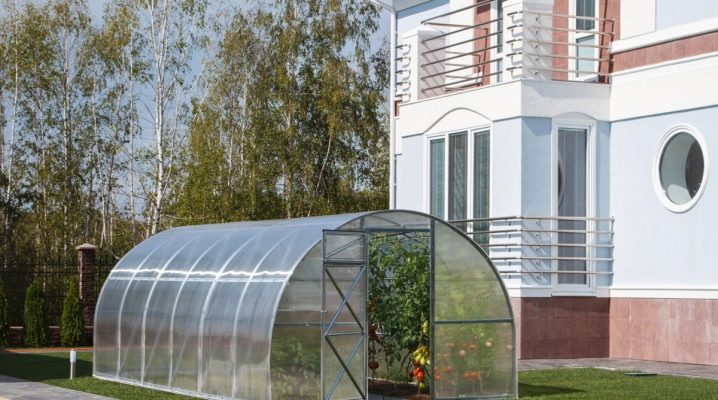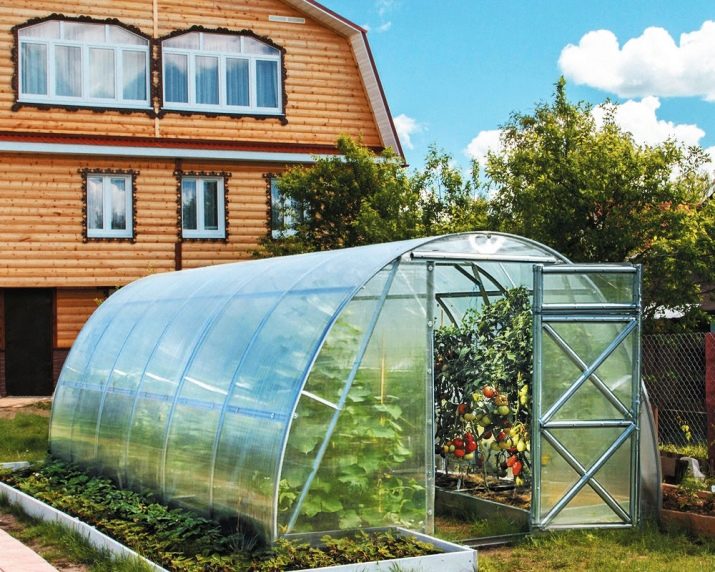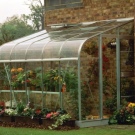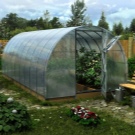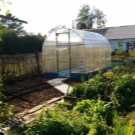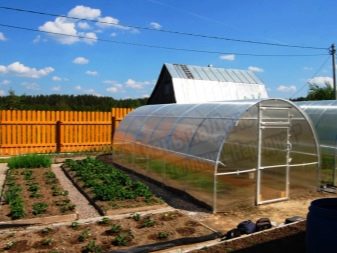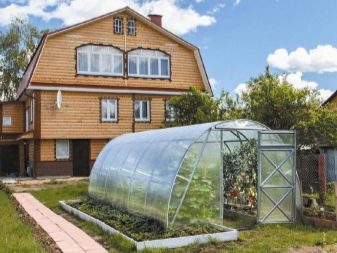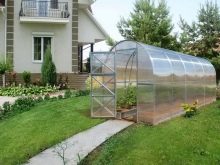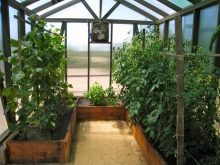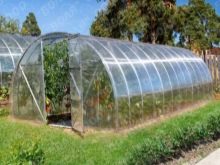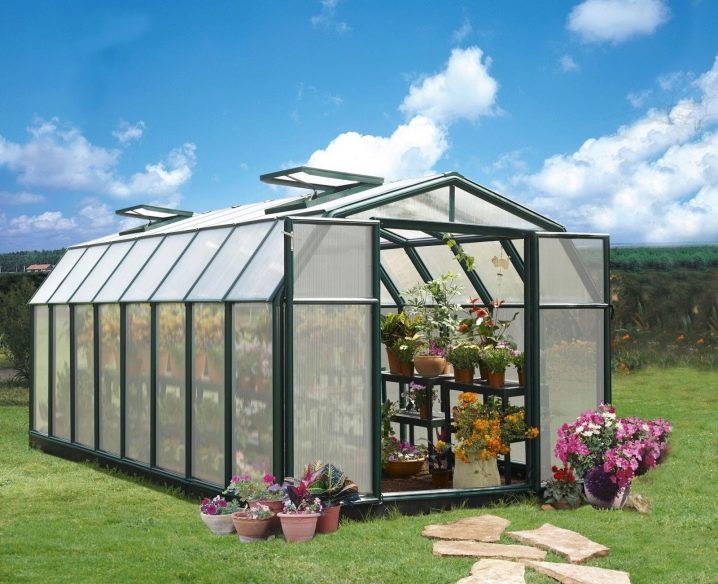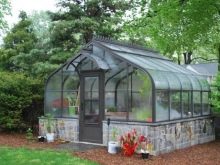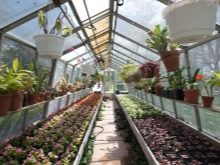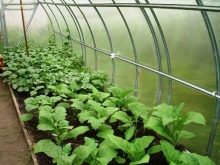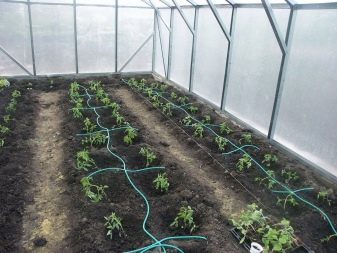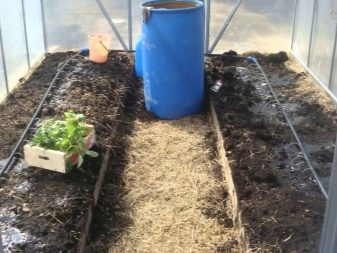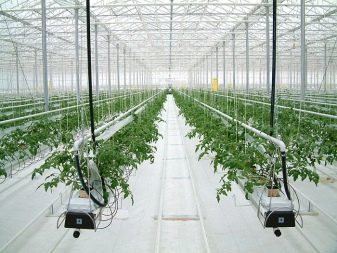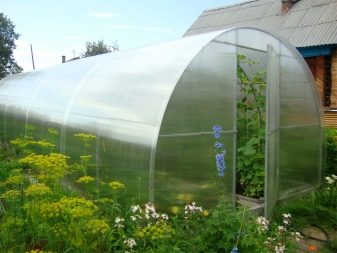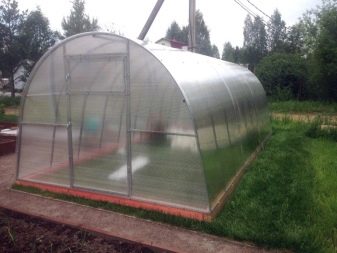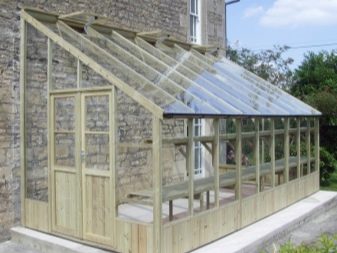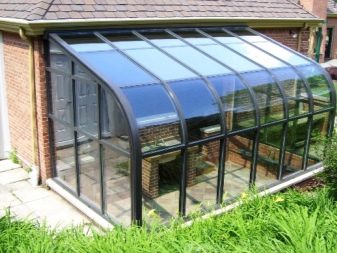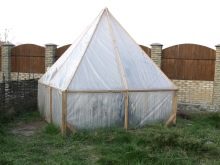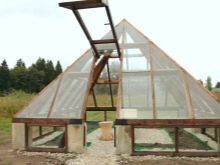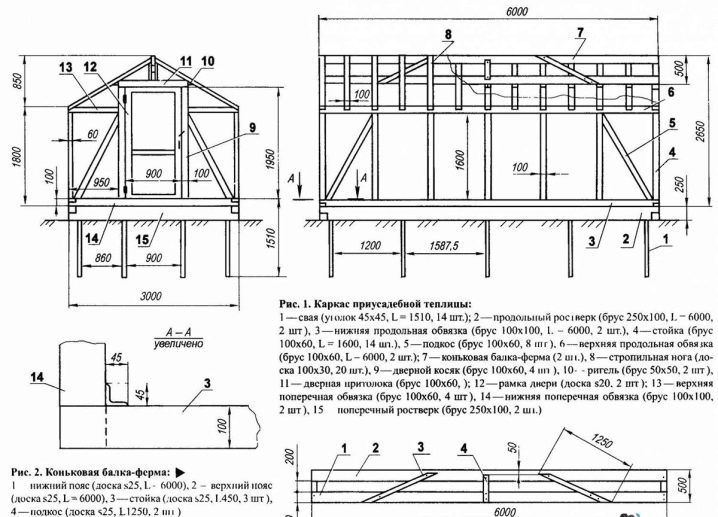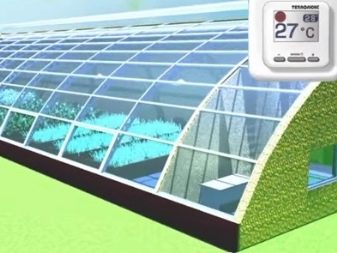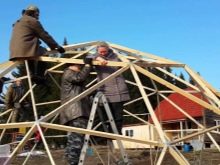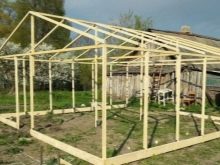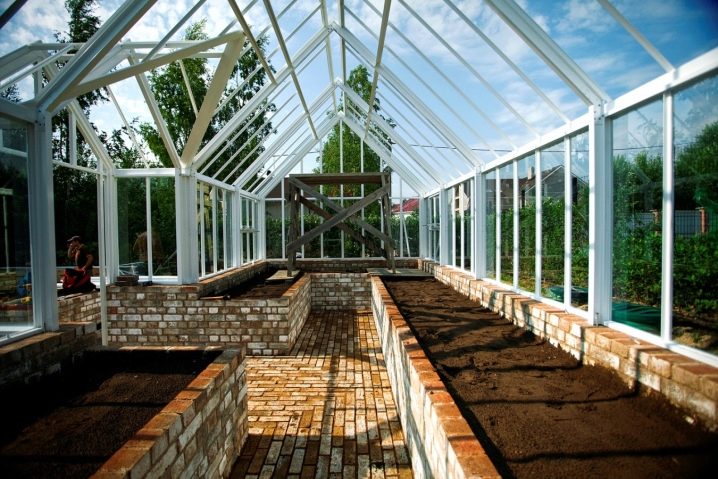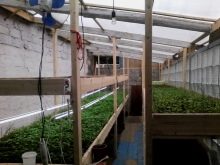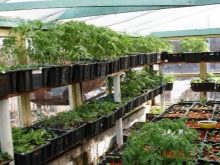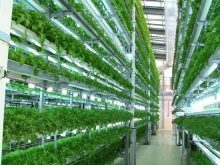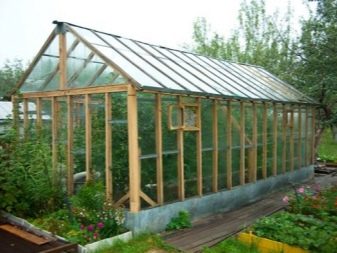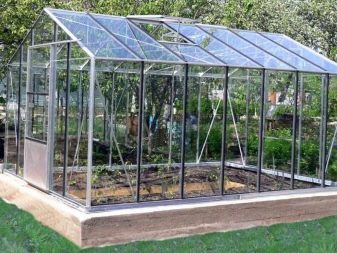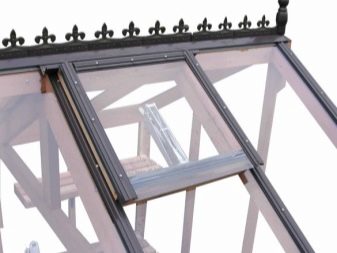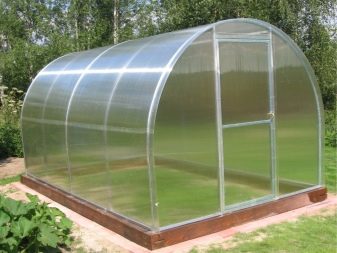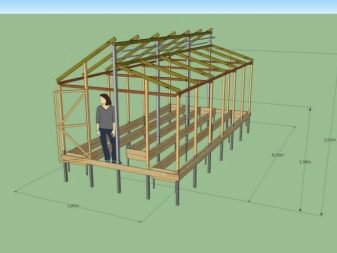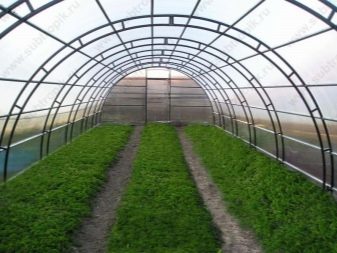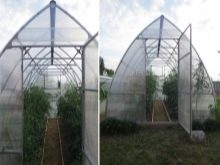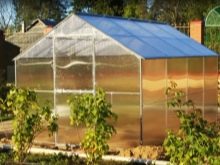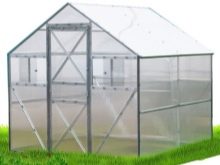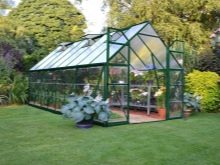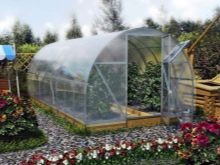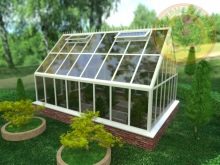Country greenhouse: types and their features
The construction of the greenhouse in the country has a number of subtleties and nuances. After all, a lot of types of structures, covering materials and projects have already been created. Having made a mistake with the choice, it will be possible to face very unpleasant consequences. Therefore, it is necessary to study in advance the various types of products before buying.
Special features
Country greenhouse is fundamentally different from the urban version. In winter and in early spring, no one clears snow from it, it does not protect various influences. So these parameters must be taken into account. Otherwise, the requirements for the maintenance of the structure are the same as for ordinary greenhouses and greenhouses. Some of the structures are intended for short-term use, for example, to obtain early cultures.
In this case, there is no need to use a greenhouse of great height, there is enough of a collapsible structure, which takes up very little storage space.Such products are relatively inexpensive, and if you take up the assembly yourself, you’ll pay almost nothing at all. More serious buildings are needed, of course, if you plan to equip a full-fledged greenhouse, which will be used throughout the vegetative season.
In this case, three conditions are necessary:
- ease of use;
- comfort for grown plants;
- affordable price.
The last moment is important not only during the purchase itself, but also because the loss of the greenhouse as a result of criminal activity or natural disaster should not cause serious damage.
Kinds
There are many types of greenhouse designs. Most of them can be found on websites or in catalogs of various companies. But it is important to take into account the nuances of each variety, so as not to be mistaken with the choice.
Which one to choose?
You can choose a greenhouse for a garden or a garden by its appearance and its compatibility with the concept of the site and the house. But it is clear that this does not guarantee the stability of the structure or obtaining consistently high yields. Therefore, when choosing a specific solution, it is necessary to focus on the purpose of using the building.First of all, it is necessary to decide whether a stationary or disassembled greenhouse would be more appropriate. In the first case, installation and maintenance concerns are noticeably reduced.
Assorted options will need to install and dismantle twice a year. But for those summer residents who visit their lands only during the summer months and are seriously afraid of theft, it is better to buy just such a product. Another important factor is the list of crops grown. Many of them require quite specific growing conditions, and cannot coexist in the same room.
But this choice does not end there. It is required to analyze the future system of cultivation: one thing is simple earth, and the other is all sorts of substrates of organic or mineral components.
Additionally, deal with how to organize watering. Most modern greenhouses are equipped with automatic or semi-automatic installations. But if the size of crops is small, and there is a desire to save money, it is more correct to prefer a regular watering can.
Adherents of hydroponics, too, will have to make a choice between designs of four different types:
- wick;
- periodically flooded;
- aeroponic;
- with floating platform.
And there is one more decisive circumstance - where and how exactly the greenhouse will arise. Installation site, unlike other parameters, after the purchase will be almost impossible to change. Any structure of this kind should simultaneously receive a maximum of solar energy and be minimally exposed to wind.
Having defined the installation point, you need to think about the geometry of the greenhouse. Most often use rectangular structures with two ramps.
If the greenhouse will be delivered as an extension to the house, it is advisable to choose options with a lean-to roof. The similar device is recognized by experts as the most practical, allowing to save both building materials, and the occupied territory. There is no particular difference between the various sides of the house, but it is still more rational to direct the roof slope to the south. Strongly limited in means people can buy an arched greenhouse - it is relatively inexpensive, and the exclusion of sharp corners reduces the need for covering material, but increases the work time.
Pyramidal greenhouses can be found only occasionally, because this option appeared relatively recently. They are mainly used by lovers of bold experiments.There is still not enough data to say whether this form really justifies itself, and how much better it is than other configurations. A rare option in Russian cottages is still a polygonal view of greenhouses. Its indisputable advantage is that due to the external structure, the heating of the internal space is accelerated.
The most rational dimensions of any greenhouse are:
- length 250 cm from base to ridge;
- the height of the lowest wall is 150 cm;
- width - 3, 5 m (according to the generalization of the experience of experienced gardeners)
Depending on the needs and goals, these indicators can be increased, but still length over 6 m for private use is inconvenient. When there is a need for this, it is better to break the greenhouse into several compartments, and not to put an inseparable monolith.
Having made doors 100 cm wide, it will be possible to easily pass with a wheelbarrow, a bag of land, or buckets in your hands.
Particularly noteworthy is the so-called eco greenhouse. It is built in accordance with the ideas of permaculture, that is, it is aimed at reproducing the conditions of the wild nature as the most organic. Yields will be high, and at the same time environmentally safe, because toxic chemicals are not used.Eco greenhouse - the only acceptable option for home cultivation of many crops from other climatic zones. Such a building is combined with a chicken coop, located in the adjacent compartment.
Air is exchanged between the compartments through the ventilation channels, which increases the concentration of carbon dioxide and ammonia in the greenhouse. To enhance the effect, thermal solar batteries are used. As the most simple options suitable capacity, filled with water or stones of various sizes.
Do I need to register?
Those who already have a greenhouse on the plot or are only going to build it are interested in news from the sphere of tax legislation. Recently, it was reported that it is required to register household buildings located on the garden and suburban areas in order to pay a special tax on them. In reality, such a tax has been in effect since 1992, and there are no plans to even establish new fees at the moment.
Registration is required only for capital buildings that cannot be moved without serious damage to their main function.
Materials
For gardeners and summer residents, the types of materials used are very significant.The wood is suitable for the frame, walls and partitions. It is easy to process and relatively light, inexpensive and can be found in almost all hardware stores. Therefore, the material occupies one of the leading positions in the rating of raw materials used to create the greenhouse.
But it must be said about the objective shortcomings of this solution, among which the main thing is the mandatory processing of raw materials with flame retardants and additives from decay. Such substances improve the quality of construction and increase its service life. Only the price of this immediately increases.
The metal is durable and relatively light, because the high strength allows you to use a smaller layer. Bolts can be used to connect parts, and a one-piece connection is provided by electric welding. A typical problem is corrosion, which is suppressed only by the preliminary application of paint or a zinc layer.
Brick is more expensive and heavier than metal, it is durable, but fragile. In addition, brick structures will have to be warmed.
If you put a greenhouse of gas silicate blocks, then we will also need warming.The advantage of this option can be considered the ease and cheapness (in comparison with the brick), as well as sufficient strength for most tasks.
Shelving-type greenhouses are used when you need to get an early harvest of vegetables or mushrooms, to grow seedlings. Tall crops and tree seedlings will not be able to grow there.
Most of the greenhouse racks are constructed from polycarbonate, because:
- It allows you to use the space under the shelves for different purposes.
- Improves the illumination of the tiers and care for them.
- There is an opportunity to do hydroponics and aeroponics.
- It will be possible to germinate seeds, if one wall is fenced off with glass.
The use of glass as a covering material is quite common. It serves for a long time, but has serious drawbacks - heaviness and fragility. If you need to operate the greenhouse throughout the year, it is advisable to install not simple frames, but double-glazed windows. Shelter under the film is the cheapest of all, and yet you have to reckon with the negative sides - low strength and poor thermal protection. Prefabricated greenhouses are made primarily of aluminum (extruded) or special plastic.
Aluminum frame parts are equipped with special grooves that allow you to insert the lining of a strictly specified thickness.
If the individual groove is too wide, rubber or plastic gaskets can be used.to compensate for the missing size. The plastic profile holds metal better than heat and costs a little less. Modern varieties of plastics have high strength and allow you to grow a considerable harvest. Covering materials are subject to standard requirements.
Projects
Small greenhouses (both arched and rectangular) are widely demanded. The best material in this case is polycarbonate, and the roofs are most often gable or sloping. Small sizes are 3x4, 3x6 meters, and larger structures are made in the format of 3x8 or even 3x12 m. The best connections are achieved through special corners. But the slats, bolts, ties and the imposition of edges on each other are less reliable.
The greenhouse, whose width is 5 m, is very well suited to accommodate a large number of beds. With the help of this design, it will be possible even to turn the passion for growing berries and vegetables into a permanent source of income.It is desirable that each connection of the frame parts be welded, and horizontal lintels be placed approximately every 0.66 m. If plants are supposed to be grown only in the summer, it will be possible to do without a powerful expensive foundation. The choice between collapsible and non-collapsible design dictates a specific situation.
Reviews
An excellent solution, judging by consumer reviews, is the Strela greenhouse: thanks to its unique design (gable pointed roof, which gradually turns into walls), it gets rid of the snow itself. Therefore, in winter, you do not have to go specifically to the country, and, moreover, the building will successfully hold out until the onset of heat. The modifications “Delta” and “Asterisk” are not worse at all, but each of them has its own particular subtleties that must be taken into account. Judging by the operating experience, arched greenhouses are less resistant to snow load.
Beautiful examples
- With all the importance of utilitarian properties of greenhouses, it is impossible not to pay attention to their appearance. The photo shows an elegant glazed greenhouse with a nice green frame. Fancy shaped doors that open to the outside immediately attract attention.The rising windows, which are equipped with a gable roof, provide quick airing.
- And this is what a hemispherical greenhouse made of polycarbonate looks like. Special chic is given to it by carefully selected plants: it is immediately obvious that they are quite high, but they do not lack space. The passage between the beds is quite elegant.
- Here you can make sure that greenhouses made of aluminum and glass can also be decorations of the site. Solid construction in the form of "house", set on a brick foundation, looks quite good. Completing the composition of several planted around the greenhouse of tapeworms.
How to make the cheapest greenhouse, see the video below.
